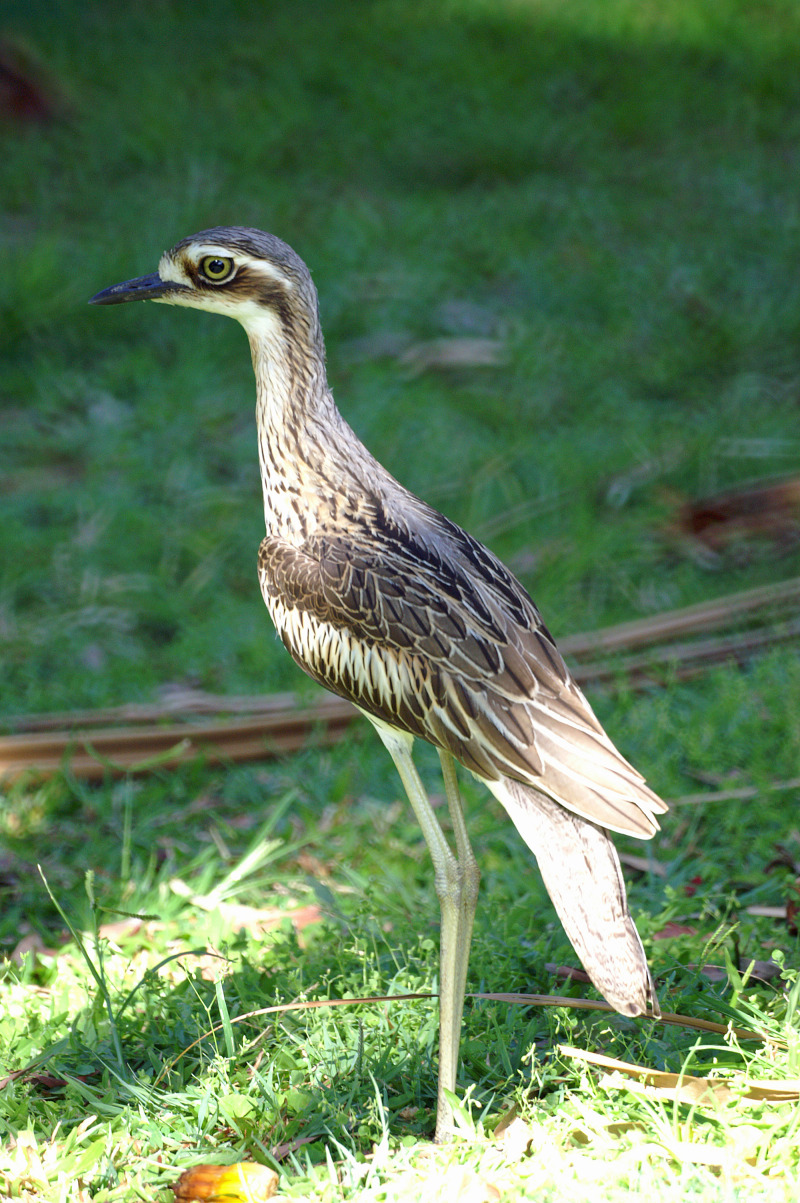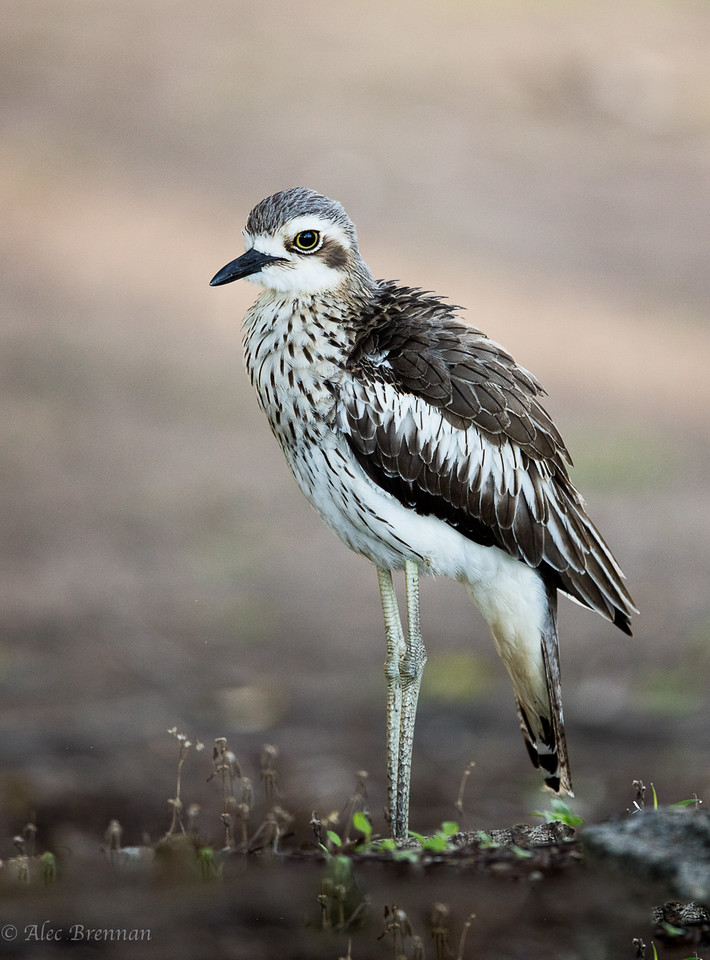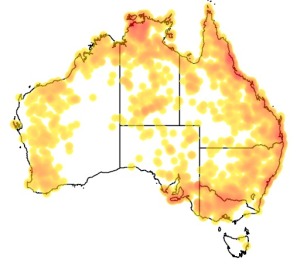Colours
Distinguishing features
Size
- Up to 60 cm (Length of specimen)
Wingspan
- Wingspan data is not yet available.
Synonyms
Distribution
Distribution and habitat preferences
It is endemic to Australia and lives in open woodland, edges of forest, and along inland watercourses, demonstrating broad habitat preferences. It is still abundant in parts of the tropical north but it is approaching extinction in pastoral areas in the south where once it was common. (Wikipedia)
Chronotypes
Behaviour
During the day, they tend to remain inactive, sheltering amongst tall grass or low shrubs and relying on their cryptic plumage to protect them from predators. When disturbed, they freeze motionless, often in odd-looking postures. (Wikipedia)
Diet
It specialises in hunting small grassland animals: frogs, spiders, insects, molluscs, crustaceans, snakes, lizards and small mammals are all taken, mostly gleaned or probed from soft soil or rotting wood; also a few seeds or tubers, particularly in drought years. Birds usually forage individually or in pairs over a large home range, particularly on moonlit nights. (Wikipedia)
Web resources
References
- Simpson, K., N. Day and P. Trusler (2004). Field Guide to Birds of Australia: 7th Edition Penguin Group (Australia), Camberwell, Victoria.





